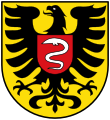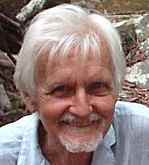After leaving Riga in Latvia I then flew to Stuttgart in Germany, and then to the nearby town of Aalen as my preferable form of travel being by ground transport, such as train, was not readily available.
I must say that I found this to be a most delightful area, in spite of it being highly industrialised.
I also had the priviledge and opportunity to visit the nearby walled town of Dinkelsbuhl,the wall of which have been restored by the money of one man so I was informed. Most certainly a massive undertaking, and one which I feel sure we all commend.
Dinkelsbühl is an historic city in Bavaria, Germany and a former Free imperial city of the Holy Roman Empire. Now it belongs to the district of Ansbach, north of Aalen.
Aalen ( (help·info)) is a former Free Imperial City located in the eastern part of the German state of Baden-Württemberg, about 70 kilometres (43 mi) east of Stuttgart and 48 kilometres (30 mi) north of Ulm. It is the seat of the Ostalbkreis district, and its largest town, as well as the largest town within the Ostwürttemberg region. Since 1956, Aalen has the status of Große Kreisstadt (“major district town”).
(help·info)) is a former Free Imperial City located in the eastern part of the German state of Baden-Württemberg, about 70 kilometres (43 mi) east of Stuttgart and 48 kilometres (30 mi) north of Ulm. It is the seat of the Ostalbkreis district, and its largest town, as well as the largest town within the Ostwürttemberg region. Since 1956, Aalen has the status of Große Kreisstadt (“major district town”).
With an area of 146.63 km2, Aalen is ranked 7th in Baden-Württemberg and 2nd within the Government Region of Stuttgart, after Stuttgart. With a population of about 66,000, Aalen is the 15th most-populated settlement in Baden-Württemberg.
Contents[show] |
| Aalen | |
 | |
| Coordinates | 48°50′N 10°6′ECoordinates: 48°50′N 10°6′E |
| Administration | |
| Country | Germany |
| State | Baden-Württemberg |
| Admin. region | Stuttgart |
| District | Ostalbkreis |
| Mayor | Martin Gerlach |
| Basic statistics | |
| Area | 146.624 km2 (56.612 sq mi) |
| Elevation | 430 m (1411 ft) |
| Population | 66,277 (31 December 2011)[1] |
| - Density | 452 /km2 (1,171 /sq mi) |
In Aalen, metalworking is the predominant industry, along with machine-building. Other industries include optics, paper, information technology, chemicals, and textiles.[52]
Notable enterprises include SHW Automotive (originating from the former Schwäbische Hüttenwerke steel mills and a mill of 1671 in Wasseralfingen), the Alfing Kessler engineering works, the precision tools manufacturer MAPAL Dr. Kress, the snow chain manufacturer RUD Ketten Rieger & Dietz and its subsidiary Erlau, the Gesenkschmiede Schneider forging die smithery, the SDZ Druck und Medien media company, the Papierfabrik Palm paper mill, the alarm system manufacturer Telenot, the laser show provider LOBO electronic and the textile finisher Lindenfarb, which all have their seat in Aalen. A branch in Aalen is maintained by optical systems manufacturer Carl Zeiss headquartered in nearby Oberkochen.[66]
I must say that I found this to be a most delightful area, in spite of it being highly industrialised.
I also had the priviledge and opportunity to visit the nearby walled town of Dinkelsbuhl,the wall of which have been restored by the money of one man so I was informed. Most certainly a massive undertaking, and one which I feel sure we all commend.
Dinkelsbühl is an historic city in Bavaria, Germany and a former Free imperial city of the Holy Roman Empire. Now it belongs to the district of Ansbach, north of Aalen.
Reformation
During the Protestant Reformation, Dinkelsbühl was notable for being — eventually along only with Ravensburg,Augsburg and Biberach an der Riß — a Mixed Imperial City (German: Paritätische Reichsstadt) where the Peace of Westphalia caused the establishment of a joint Catholic–Protestant government and administrative system, with equality offices (German: Gleichberechtigung) and a precise and equal distribution between Catholic and Protestant civic officials. This status ended in 1802, when these cities were annexed by the Kingdom of Bavaria.
Around 1534 the majority of the population of Dinkelsbühl became Protestant
The World Wars
Remarkably, Dinkelsbühl remained totally unscathed, except for a broken window in St. George's Minster
Modern Day
The film, "The Wonderful World of the Brothers Grimm" (1962), was filmed on location in Dinkelsbühl.
[edit]Main sights
Dinkelsbühl is still surrounded by the old medieval walls and towers. There exist a lot of outstanding attractions. The image of this town is very typical for a German town of the 15th to early 17th century.
- St. George's Minster is a beautiful masterpiece of the gothic style in the late 15th century ( by Nikolaus Eseler )
- St. Paul's, now a Protestant church, was rebuilt in the 19th century in the style of the far late Roman architectural style. It was originally part of a monastery.
- The Castle of the Teutonic Order, it has a rococo chapel.
- The so-called Deutsches Haus, is the ancestral home of the counts of Drechsel-Deufstetten. It is a fine specimen of the German renaissance style of wooden architecture.
- Situated in front of the Minster is a monument to Christoph von Schmid (1768-1854), a 19th century writer of stories for the young.
- Museum of the 3rd Dimension, It is housed in the former city mill.
- The Historical Museum, showed historical discoveries found within Dinkelsbühl and also has reconstructions of the ancient houses of the city. Since 2008, the museum has had a new domicile in the so called "Steinerne Haus" from the 14th century. The official name is now: "house of history". While many of the artifacts are the same, the presentation is completely new.
- The church of St. Vincent, which is 2 km outside the city.



No comments:
Post a Comment